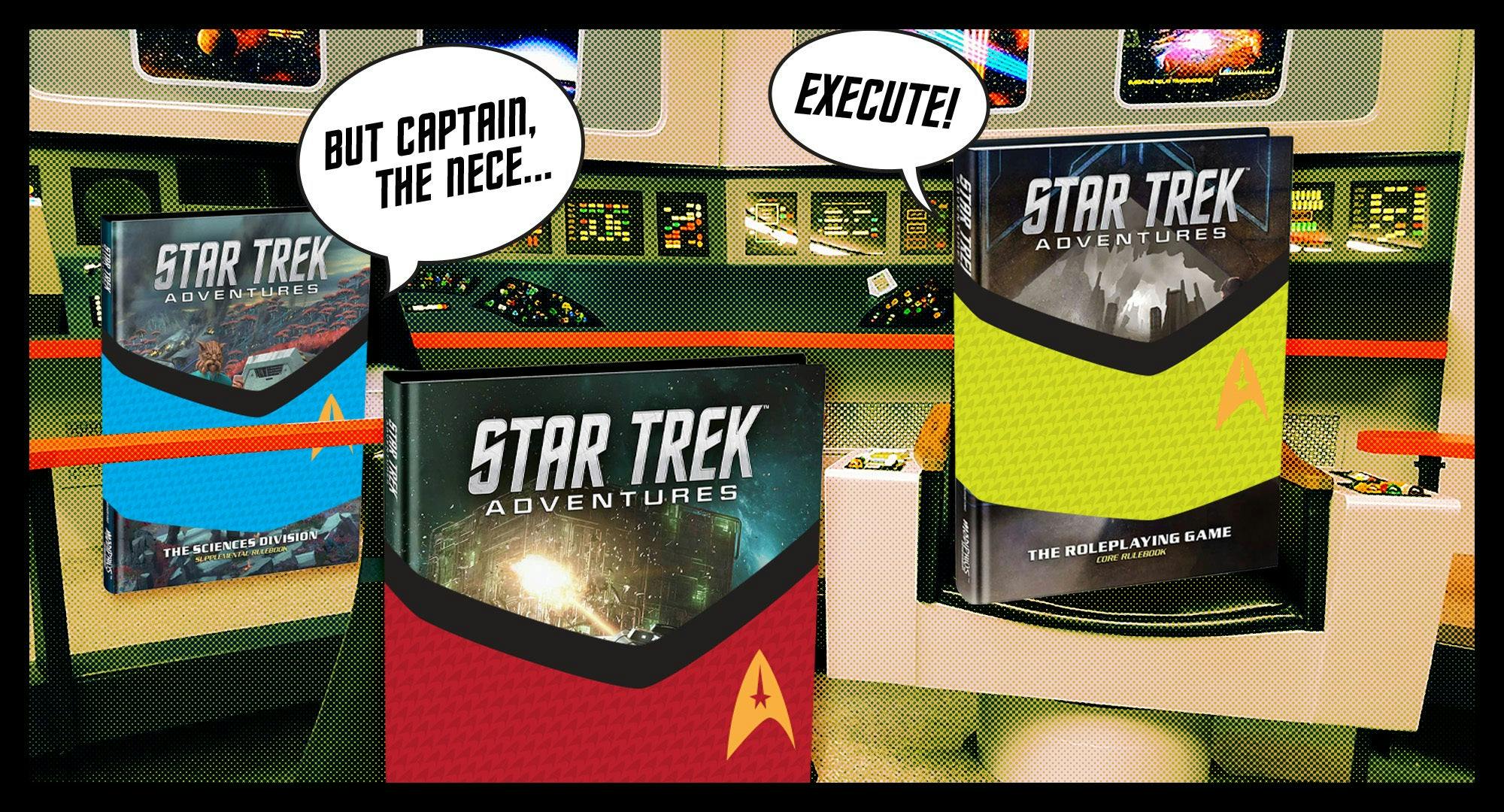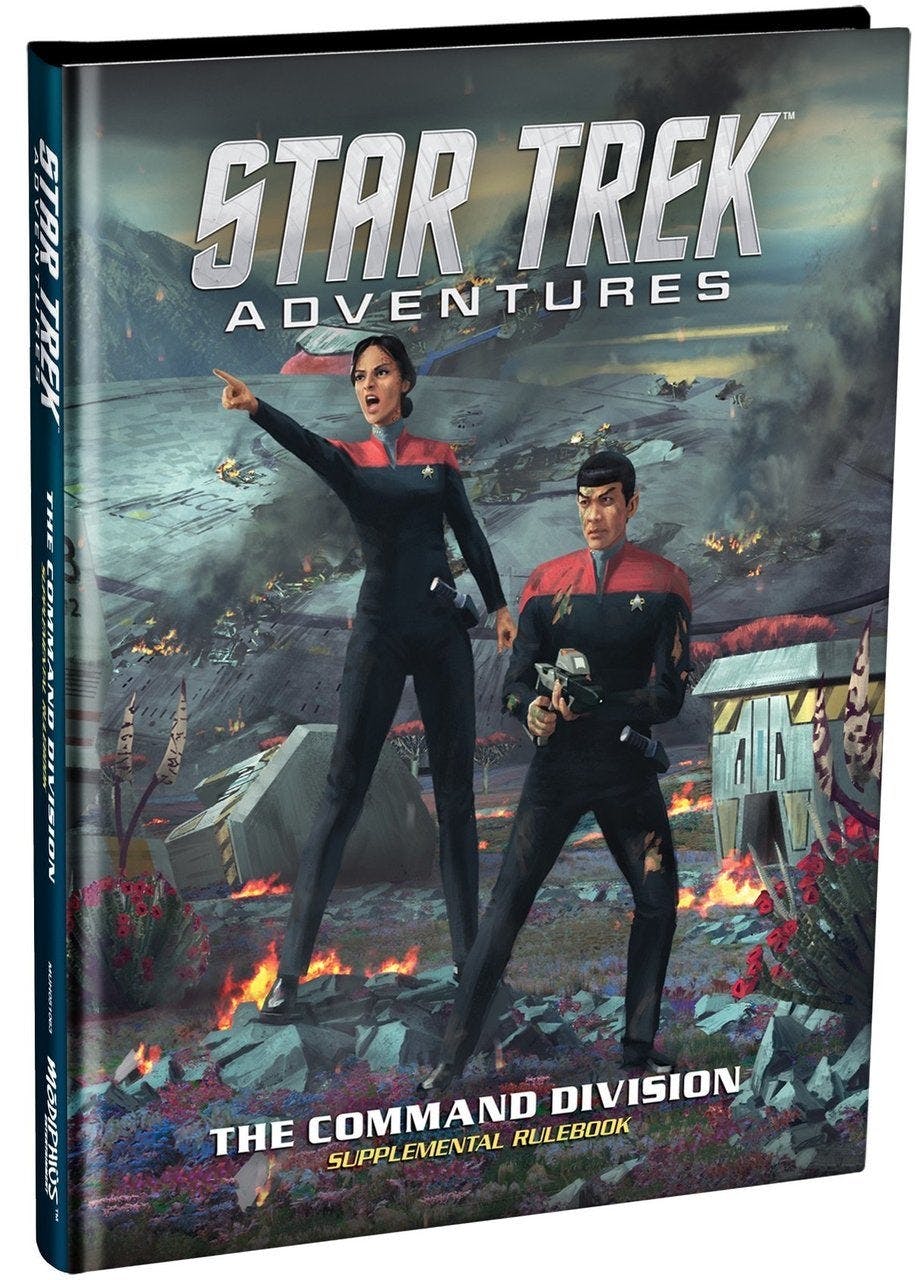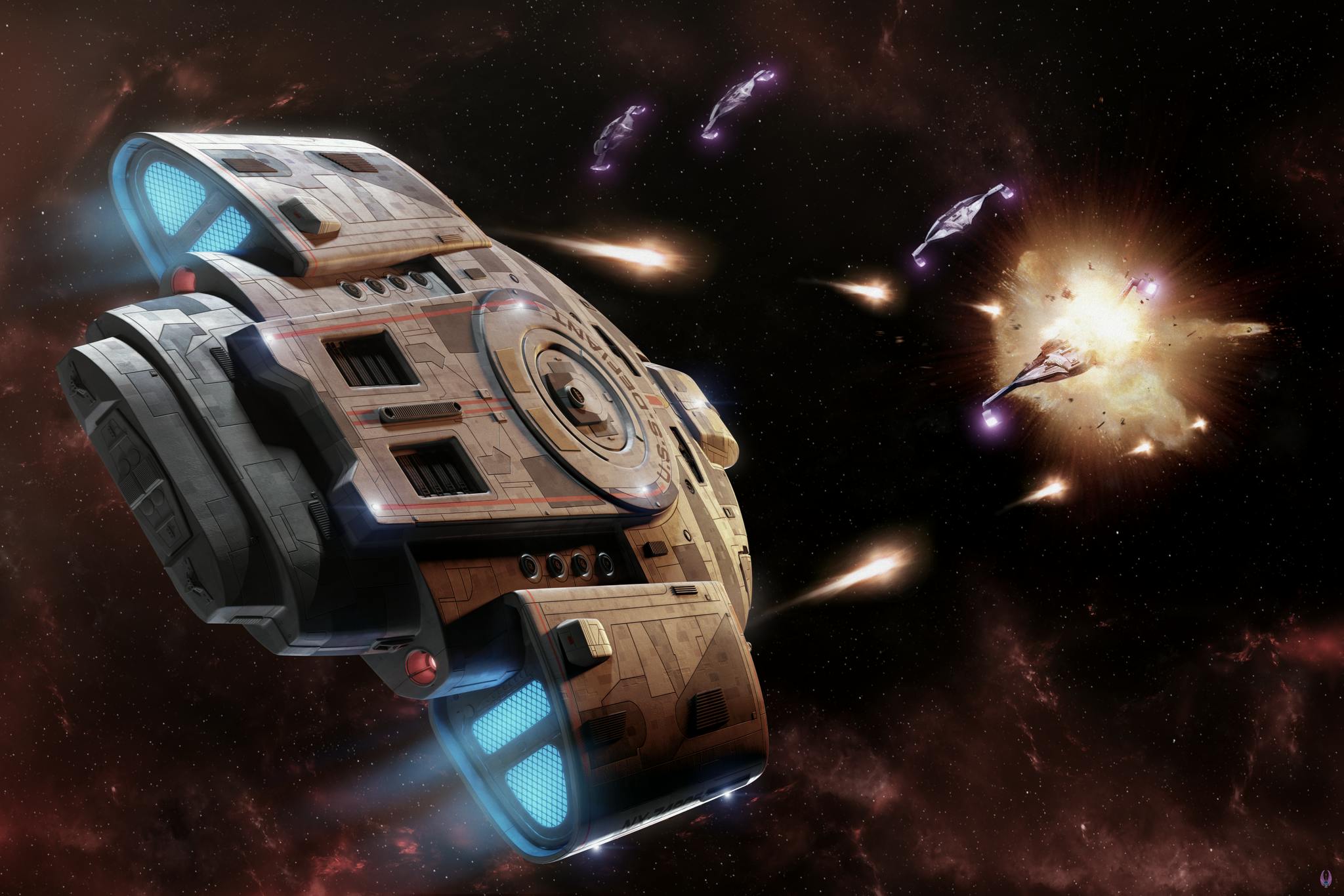Published Jan 12, 2021
What You Need To Get Started On Your Star Trek Adventures
Ring in the new year by starting your own Star Trek adventure.

StarTrek.com
It’s a new year, which often comes with the drive to try new things. There are plenty of articles on how to start exercising or organize your life, so this one is going to take a slightly different tactic. We’re going to talk about how to start running a game of Star Trek Adventures! Role-playing games are an excellent way to spend time with friends and family telling stories. The role of Game Master (also known as GM) is a challenging and exciting way to explore the Star Trek universe.
The first thing needed is the Star Trek Adventures core rulebook, which is currently available in physical and digital forms. The book has all the details on the rules needed to play the game, such as how to create characters, how to resolve actions within the game and advice on how to write Star Trek stories. The original book allows for play in the Enterprise, Next Generation and Original Series timelines, while the recently released Klingon Empire core book allows characters to play as a ship full of the classic aliens. You’ll also need some dice, which can be acquired in the usual local game shops or even official dice in the classicStarfleetcolors.

StarTrek.com
New Game Masters can write their own adventures but there are a lot of prebuilt scenarios already out there. Two books, These Are The Voyages and Strange New Worlds, collect several adventures from across the different timelines in one place. There are also several single adventures available from digital storefronts like DriveThruRPG. Finally, the publishers offer a living campaign for two series set in the original timeline and the Next Generation era. The campaign is on hiatus, but the adventures are all available to download for free and can be used any time. Reading adventures helps new GMs learn how to structure game ideas and provide examples on how to use the mechanics of the game. They also provide material that can be used in a pinch if the GM is not inspired that week; even if they don’t use a full adventure, there might still be a scene or a character that inspires them.
Fans looking to focus their campaigns have some excellent choices for add on books. The Division sourcebooks focus on one of the three divisions of Starfleet: Command, Science and Operations. Not only do those books offer more detailed options for characters from that division, they also offer more advice on stories that focus on these areas. Want to tell stories of intrigue within Starfleet? Pick up the Command Division book. Want to explore the technologies that make Star Trek? Get the Operations Division book. Want to dive into exploration and the wonders of the scientific world? That’s in the Science Division book.
The publishers have covered the galaxy with four books divided by the Quadrants used by the Federation. The classic worlds and species of the Federation are detailed in Beta Quadrant. Adversaries and allies from the Next Generation like the Betazed and Ferengi get their due in Alpha Quadrant. The Gamma Quadrant offers plenty of information on the Dominion and the war played out during Deep Space Nine. Finally, Delta Quadrant features details on the unstoppable Borg, including options for players to emulate characters like Seven of Nine and Hugh. All of these books offer new player options and storyline hooks in addition to setting info.
Advice From The Captain’s Chair

startrek.com
Now that you’ve decided to take command of a Star Trek Adventures game, let’s offer some advice for the new Game Master.
Talk to your players about the game. Make sure you’re all of the same mind of what stories you want to tell. The universe of Star Trek is a big one, and if the Game Master wants to tell tense stories of starship combat while the players want to peacefully explore the galaxy, that can cause tensions between everyone in the group. Ask questions before the game and check in as the campaign plays on.
Fail forward. Starfleet officers are competent and well-trained but not infallible. When things go wrong in a Star Trek story it’s usually because of an unforeseen complication or something out of the character’s control. Make sure that if the player needs something to keep the story going like a clue or an unlocked door, there’s a way to get it if they fail their roll. If they can’t override the door locks to get into the engine room, maybe they can crawl through the Jeffries tube. Even when the characters fail, the story moves forward.
Run A-story/B-story plots. On TV shows like Star Trek, most episodes have a main plot that everyone must deal with and a subplot that develops one of the characters. Using this in the game helps keep everyone at the table engaged while also giving spotlight time to one of the players during an episode. It’s a great way to look for personal connections to a story in a player’s background to make for interesting and dramatic complications. It’s hard enough dealing with a violation of the Neutral Zone, but when the defecting enemy commander was responsible for the destruction of a player’s previous vessel, that’s the stuff of high drama.
Now is a great time to start playing Star Trek Adventures. And the future looks even brighter with recent announcements of Star Trek: Discovery and Star Trek: Picard sourcebooks on the way!
Rob Wieland (he/him) is an author, game designer and professional nerd who developed the adventure classifications for Star Trek Adventures. He lives in Milwaukee, Wisconsin with his wife, two cats and a future Starfleet Admiral.
